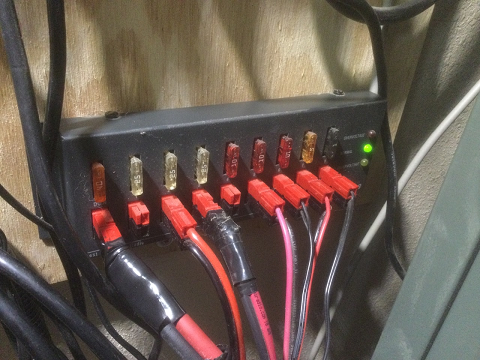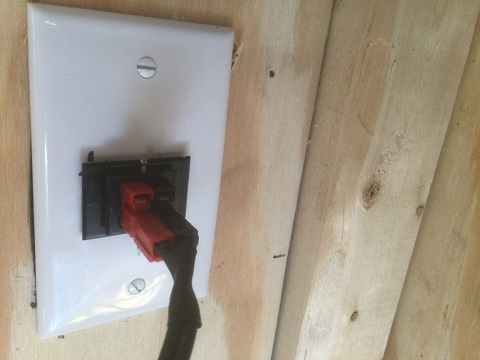The Short & Long on Powerpole Connectors
I am stoked to post another article from Jackalope. This time on powerpole connectors. For you folks who do not know Jackalope, he has forgotten more than I know when it comes to transceivers and solar power. Thank you sir for writing this. I am honored to post it for you. Enjoy! JMc In the electronics world, specifically in amateur radio, powerpole connectors have become the de facto standard for connecting power cables. Prior to powerpoles, amateur operators used two wire trailer connectors,
Molex Connectors, or
Jones Cinch plugs to make high amperage electrical connections. There was always a concern about polarity, or whether the connector could adequately handle the amperage necessary for the equipment. In 1966, Anderson Power Products obtained a patent for powerpole connectors, which are physically and electrically hermaphroditic, eliminating the need for male and female connectors. When properly installed, the connectors cannot cause a reverse polarity or short circuit condition. The actual connector can be crimped, or soldered to the accompanying wire. Make sure the positive wire is connected correct connector, usually red. The negative wire is typically black, as should be the corresponding connector. The Amateur Radio Relay League provides detailed assembly tips at
this website.
I'm an old school ham, so I solder my powerpole connections, though I understand that crimping may be quicker. It should be noted that there are powerpoles available for nearly any application, with amperage ratings up to 700 amps. Typically, amateur operators will use the 15, 30, and 45 amp connectors, all of which are the same physical size. I've used some of the higher amperage connectors on some solar system installations, they work great. Some of the Anderson patents have expired, so we're starting to see other companies produce similar connectors, but I've found that genuine Anderson powerpoles have the best quality.
Powerpoles can be used for power distribution. West Mountain Radio manufacturers a series of distribution boxes which fuse each connection. I use a West Mountain Radio Rigrunner model 4008 to power the various radios at my station. They're available directly from
West Mountain Radio. The model 4008 has a warning tone too, if the supply voltage drop below a pre-set value. The same company manufactures other distribution boxes with less or more connections.
 Powerpole Rigrunner
Powerpole Rigrunner Powerpole Distribution Block
Powerpole Distribution BlockA less expensive option is a powerpole power splitter. I use some of these in my hamshack for lower amperage applications. They're simply a less expensive method of power distribution; no fuses are involved.
Here's an example.
There are powerpole mounting solutions which allow you to mount powerpoles in standard wall mount electrical boxes, or on an equipment chassis. These mounts allow you to put powerpoles throughout a building, much like AC outlets.
 Powerpole Wall Mount
Powerpole Wall Mount There are now power cords available for many radios, which already have the powerpoles installed. For example,
here is a cord for a HF radio, requiring 6 pins. For older
Kenwood and Icom radios which require 4 pins.
There are powerpole
cables cables which go from a lighter plug to a conventional powerpole, allowing you to power a powerpole equipped radio with a standard vehicle lighter outlet.
There are pre-made cables for most modern radios, so there's no need to break out the soldering iron or crimper. Both
Quick Silver Radio and
Powerwex offer a wide variety of powerpoles and powerpole accessories.
MFJ offers one unique item that uses powerpoles, a
battery booster. The battery booster maintains the voltage that your radio likes to see when transmitting, i.e., 13.8 volts. I've found that the voltage drop from my photovoltaic system batteries to my hamshack is only about a volt, but it's still enough to effect the radios when transmitting. The booster does the job, and the radios work like they should.
